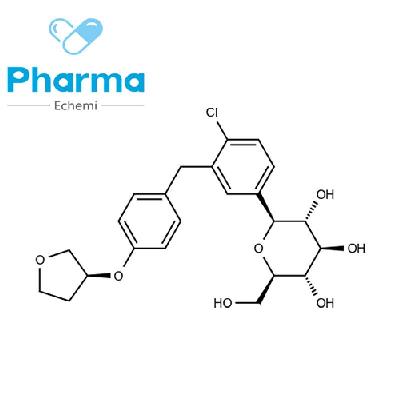-
Categories
-
Pharmaceutical Intermediates
-
Active Pharmaceutical Ingredients
-
Food Additives
- Industrial Coatings
- Agrochemicals
- Dyes and Pigments
- Surfactant
- Flavors and Fragrances
- Chemical Reagents
- Catalyst and Auxiliary
- Natural Products
- Inorganic Chemistry
-
Organic Chemistry
-
Biochemical Engineering
- Analytical Chemistry
-
Cosmetic Ingredient
- Water Treatment Chemical
-
Pharmaceutical Intermediates
Promotion
ECHEMI Mall
Wholesale
Weekly Price
Exhibition
News
-
Trade Service
Type 2 diabetes affects more than 30 million adults in the United States and more than 500 million worldwide, and its main human and economic costs are caused by diabetes-specific complications, including retinopathy, kidney disease and neuropathy, and people with diabetes have a 2 to 5 times
higher risk of cardiovascular disease than people without diabetes.
By lowering blood sugar, diabetes-specific complications are improved
.
Most people with type 2 diabetes have a target glycated hemoglobin level below 7.
0
.
Almost all guidelines for glycaemic management in patients with type 2 diabetes recommend metformin as the first agent, but there are few long-term controlled studies to guide the choice of
a second hypoglycemic agent.
A Comparative Effectiveness (GRADE) study investigated the relative effectiveness
of the four most commonly used hypoglycemic drugs in maintaining target glycosylated hemoglobin levels when used with metformin.
In this trial, the investigators compared the effectiveness of four commonly used glucose-lowering drugs in participants with type 2 diabetes (lasting less than 10 years) and treated with metformin with glycated hemoglobin levels of 6.
8-8.
5%.
Participants were randomly assigned to receive insulin glargine U-100 (hereinafter referred to as glargine), sulfonylurea glimepiride, glucagon-like peptide-1 receptor agonist liraglutide, or sitagliptin (a dipeptidyl peptidase 4 inhibitor).
The primary metabolic result was a glycosylated hemoglobin level (measured quarterly) of 7.
0% or higher (subsequently confirmed), and a secondary metabolic result was a confirmed glycosylated hemoglobin level greater than 7.
5%.
A total of 5047 participants (19.
8% black and 18.
6% Hispanic or Latino) who received metformin for type 2 diabetes were followed for an average of 5.
0 years
.
The cumulative incidence of glycated hemoglobin levels of 7.
0% or higher (the main metabolic outcome) differed significantly between the four groups: the incidence of glargine and liraglutide (26.
1) was similar, lower than that of glimepiride (30.
4) and sitagliptin (38.
1).
The difference in glycosylated haemoglobin levels greater than 7.
5% between groups was comparable
to the difference in the primary outcome.
Kaplan-Meier analysis of outcome events and mean glycated hemoglobin levels
There were no substantial differences in the primary outcomes in the prespecified subgroups defined by sex, age, race, or ethnicity, however, among participants with higher baseline glycosylated hemoglobin levels, the benefits of insulin glargine, liraglutide, and glimepiride appeared to be greater
than that of sitagliptin.
Compared with glargine (1.
3%), liraglutide (1.
0%), or sitagliptin (0.
7%), glimepiride had a lower
incidence of severe hypoglycemia.
Participants treated with liraglutide reported more frequent gastrointestinal side effects and weight loss
compared to other treatment groups.
In summary, this study found that all four drugs (insulin glargine, glimepiride, liraglutide, and sitagliptin) improved glycosylated hemoglobin levels when metformin was added
.
However, insulin glargine and liraglutide are significantly more effective
at achieving and maintaining target levels of glycated hemoglobin.
References: GRADE Study Research Group, Nathan DM, Lachin JM, et al.
Glycemia Reduction in Type 2 Diabetes - Glycemic Outcomes.
N Engl J Med.
2022 Sep 22; 387(12):1063-1074.
doi: 10.
1056/NEJMoa2200433.







